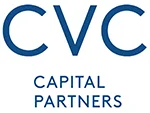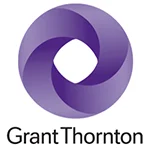 |
| Andrew Healy |
The financial services space is no stranger to economic crises and mass uncertainty. In just the last quarter century, they’ve experienced—and in some cases, caused—the 2008 financial crisis, the dot-com bubble, the 9/11 attacks, financial crises in Asia and Argentina and Black Monday.
Where COVID-19 will ultimately rank on this list is yet to be determined, but as with every industry and part of society, the coronavirus’ impact on the financial services space will be deep and felt for years.
Marketers and communications professionals can’t always see into the future, but the initial dust from COVID-19 has settled enough for a few takeaways to emerge.
Growing focus on internal comms.
I’ve argued for years that financial institutions too often overlooked one of their most critical audiences: their employees. Not every firm is guilty of this, and we’ve had the pleasure of working on some fantastic internal communications programs with clients, but brands often focus on external audiences first—media, investors, clients—with employee engagement falling down the list. Fortunately, that's changing.
| This article is featured in O'Dwyer's Aug. '20 Financial PR/IR & Professional Services PR Magazine. |
As firms scrambled to adjust to a remote setting, they were literally forced to make their employees a top priority. It’s somewhat unfortunate that it took a global pandemic for companies to realize their internal team is the foundation for everything they do, but it’s been heartwarming to see brands step up to the plate and truly focus on their people.
I’ve had countless conversations with people who couldn’t stop talking about how transparent and communicative their firms were during those difficult early weeks of the shutdown, and how reassuring it was to work for a company so focused on them during an unprecedented time of need. The financial brands that truly get this and take the time and resources to invest in this area will retain and attract good employees and, ultimately, win out.
Shift away from products
Finance operates like every other industry: customers have needs and financial firms fill that gap with services and offerings, from online stock trading platforms to mutual funds and ETFs, to more nuanced strategies for institutional investors and family offices. But the common thread throughout is the same: sell a product.
But in mid to late March when domestic markets were down more than 30 percent, cities all around the world were shutting down, and global uncertainty and fear around the virus was at its peak, the last thing clients wanted to do was go shopping.
Fortunately, most financial brands recognized this and changed their communications approach overnight. Gone were advertisements and articles touting new ETFs, and in their place, firms rolled out content aiming to help clients understand and get through the economic fallout.
Webinars, tutorials and increased social engagement replaced roadshows, product launches and media tours, and though a strong market recovery in Q2 has calmed nerves and consumers are again planning for the future and need financial advice and investment products, brands that continue to focus on educational and client-centric content will see their clients return the favor.
Shorter campaign windows …
Long-term strategic planning will always have a seat at the table, but COVID-19 has compressed the typical marcom planning window dramatically. Those annual 2020 plans that took so long to craft suddenly didn’t offer the roadmap they did just a few weeks ago, and marketers had to shift immediately in response to the changes in their clients’ needs.
With a Presidential election less than 100 days away and continued uncertainty due to the virus, brands need to remain flexible and nimble. Agility is a word that marketers love to throw around, but it’s needed now more than ever.
… And shorter content
Just as brands need to adjust to a shorter marketing calendar, they also need to shift their content strategy as well. There is a minefield of macro and micro-economic concerns on clients’ minds, offering brands a great opportunity to post more frequent, shorter-form content to respond to timely concerns and engage with their audiences.
Short-form video marketing has been on the rise for years, and for good reason, and this will continue to be a key part of brands’ marketing approach moving forward. Infographics, Q&As, blogs, podcasts and how-to content will also play a starring role as brands increase their content output in a fast-moving environment.
Measurement is king
Over the last 10 years, PR pros have made significant progress towards tracking and measuring their impact. Vague and outdated methods such as ad value equivalency and inflated media impressions have fortunately been replaced with more thoughtful, tangible metrics.
The shift towards digital has given PR pros access to a world of data they never knew existed, which in turn has helped agencies and brands do a better job tracking their efforts in real time and adjusting as needed. Optimizing on a regular basis is a more effective approach then a “set it and forget it” one, and working alongside clearly defined KPIs has helped the industry better articulate the value they’re adding.
As budgets continue to feel pressure from COVID-19, measurement and ROI will be as important as ever. Communications pros will need to invest more time and resources in this area to better showcase their efforts, and clearly articulate how it ties back to corporate goals and revenue targets.
Be nimble
The emergence of the coronavirus came at a time where the financial marcom landscape was already going through a series of sea changes. Departments and disciplines that for decades were housed separately have since been merged, new strategies have emerged while old ones have faded to the background and C-suites today have a level of understanding and appreciation of communications that their predecessors often lacked.
Companies can weather traditional downturns and crises, but the uncertainty caused by COVID-19 has presented a unique challenge that firms weren’t prepared for. I expect we’ll see more project-based assignments, as brands deal with decreased budgets and delayed product launches. Brands will continue to consolidate their agency rosters, which will force agencies to diversify and expand their offerings. And everything will be reviewed on a nearly daily basis, as a campaign set to roll out next month that may look fantastic today might be tone deaf by next week.
Clients are more engaged today than ever, and that’s a double-edged sword that PR professionals should remind themselves of every day.
***
Andrew Healy is Partner and Co-Founder of Water & Wall.


 Teneo is handling the initial public offering of CVC Capital Partners, one of Europe’s largest private equity firms with nearly $200B in assets under management.
Teneo is handling the initial public offering of CVC Capital Partners, one of Europe’s largest private equity firms with nearly $200B in assets under management. Brunswick Group represents Endeavor Group Holdings as it agrees to go private via its acquisition by Silver Lake technology investment firm, which is handled by Edelman Smithfield.
Brunswick Group represents Endeavor Group Holdings as it agrees to go private via its acquisition by Silver Lake technology investment firm, which is handled by Edelman Smithfield. Tod Donhauser, a nine-year veteran of Edelman, has joined H/Advisors Abernathy as managing director and head of its San Francisco office.
Tod Donhauser, a nine-year veteran of Edelman, has joined H/Advisors Abernathy as managing director and head of its San Francisco office. Intelligent Group Ltd, a Hong Kong-based financial PR firm, has priced its initial public offering of 1.9M shares at $4, which is the low end of the $4 to $5 range.
Intelligent Group Ltd, a Hong Kong-based financial PR firm, has priced its initial public offering of 1.9M shares at $4, which is the low end of the $4 to $5 range. Kekst CNC represents Grant Thornton as it sells a majority stake in its US arm to New Mountain Capital, which relies on Goldin Solutions, in what is billed as the largest PE investment in the accounting and advisory sector.
Kekst CNC represents Grant Thornton as it sells a majority stake in its US arm to New Mountain Capital, which relies on Goldin Solutions, in what is billed as the largest PE investment in the accounting and advisory sector.


 Have a comment? Send it to
Have a comment? Send it to 
No comments have been submitted for this story yet.